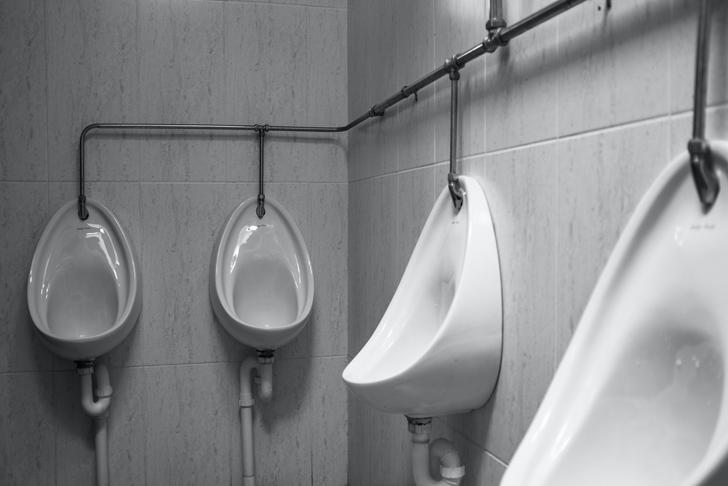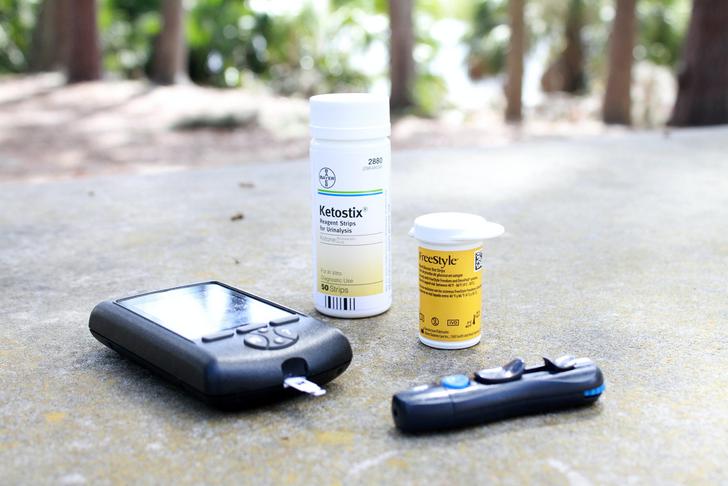10 ketoacidosis symptoms
 Article Sources
Article SourcesDiabetic ketoacidosis is a potentially life-threatening condition in which the body doesn’t have enough insulin to use blood sugar as energy.[[1]] Instead, the body breaks down fat as an energy source, which allows ketones to enter the bloodstream.[[2]] This causes the blood to become acidic and requires immediate medical treatment. While ketoacidosis is most common in people with type 1 diabetes, it can also affect those with type 2 diabetes. Illnesses, issues with insulin doses, injuries, and some medications can cause ketoacidosis. Recognizing ketoacidosis symptoms early is essential since they progressively get worse.
Unusual Thirst and Dehydration
Feeling excessively thirsty is an early ketoacidosis symptom.[[1]] The person might drink more water to try to quench their thirst. Patients with ketoacidosis might feel like their mouth is very dry. They could also become dehydrated.[[2]] Signs of dehydration can include reduced sweating, dark urine, dry skin, tiredness, and dizziness.[[3]] Urinating too much, which is another sign of ketoacidosis, can contribute to dehydration.

Advertisement
Increase in Urination
People with ketoacidosis often have an increase in urination due to the high blood glucose levels associated with the condition.[[4]] This is often an early sign of the condition, along with excessive thirst.[[2]] Frequent urination can cause dehydration and loss of electrolytes. The treatment for diabetic ketoacidosis often includes IV fluids with electrolytes and insulin to replace the lost minerals and to help lower blood sugar levels.[[4]] The fluids also help combat dehydration.

Advertisement
High Ketones
Diabetic ketoacidosis causes an increased level of ketones in the blood and urine.[[2]] The patient can test their ketone levels to determine if they’re elevated. Ketone-testing kits are available to check the ketone levels in the blood or urine. People with diabetes should perform this testing when their blood sugar levels are 240 mg/dL or higher or when they experience other symptoms of ketoacidosis.[[1]]

Advertisement
Headache
Having a headache can be a symptom of ketoacidosis as it progresses.[[1]] The person might also experience muscle stiffness or aches.[[1]] Several other things can cause headaches that are unrelated to diabetes or ketoacidosis. Headaches can be caused by stress, medications, alcohol, certain foods, and many other issues.[[5]] Muscle aches and stiffness can also be caused by overuse, tension, or injuries.[[6]]

Advertisement
Fruity-Smelling Breath
High ketone levels in the bloodstream can cause the patient’s breath to smell fruity during ketoacidosis. The fruity breath smell comes specifically from acetone, which is one of the main types of ketones that become elevated in the bloodstream during diabetic ketoacidosis.[[7]] When someone has fruity-smelling breath, they need immediate medical attention. This is a time to call 911 or go to an emergency room.[[1]]

Advertisement
Digestive Issues
Some symptoms of ketoacidosis affect the digestive system. Patients might start to feel nauseous. Some people vomit as a later, more severe symptom of ketoacidosis.[[2]] This condition can also cause abdominal pain. Nausea and vomiting are symptoms that happen with a variety of less severe health conditions, such as migraines, stomach bugs, food allergies, and medications.[[8]] Abdominal pain can also be caused by constipation, food allergies, irritable bowel syndrome, and indigestion.[[9]]

Advertisement
Abnormal Breathing
Diabetic ketoacidosis can affect breathing. It could cause shortness of breath as the condition worsens.[[2]] Ketoacidosis can also cause Kussmaul breathing, which is breathing that’s faster and deeper than normal at a consistent pace.[[10]] The body does this to get rid of the acid that’s caused by ketones in the blood.[[10]] Ketoacidosis is usually the cause of Kussmaul breathing.[[10]] Renal tubular acidosis, cancer, toxins, sepsis, and some forms of organ failure can also cause it.[[10]]

Advertisement
Weakness or Fatigue
People with ketoacidosis may eventually feel weak or very tired.[[2]] This is typically an advanced sign of the condition. Exhaustion and weakness can happen for a variety of reasons, including lifestyle factors such as poor sleep or not exercising. Illnesses, such as common colds, can make people feel extremely tired and weak. Certain medical conditions can also cause fatigue including anemia, chronic fatigue syndrome, heart failure, and hypothyroidism.[[11]]

Advertisement
Confusion
Ketoacidosis symptoms get gradually worse if the patient doesn’t seek medical treatment. Confusion and feeling disoriented are more severe symptoms that occur as the condition progresses.[[2]] The person might have difficulty concentrating. Confusion and disorientation can be caused by a variety of serious health conditions. This includes head trauma and brain tumors.[[12]] Other less severe causes can also be to blame, including nutritional deficiencies and infections.[[12]] A doctor should evaluate the symptoms to determine the cause of confusion.

Advertisement
High Blood Glucose Levels
Blood glucose levels are high when a patient experiences diabetic ketoacidosis. Blood sugar levels over 250 mg/dL could indicate the early stages of the condition.[[2]] Testing blood sugar is the only way to accurately check for elevated levels.[[2]] Increased testing frequency when the patient is sick or stressed can help detect elevated levels early. Testing should increase to every 1 to 2 hours if blood glucose levels are higher than 250mg/dL.[[4]]

Advertisement





